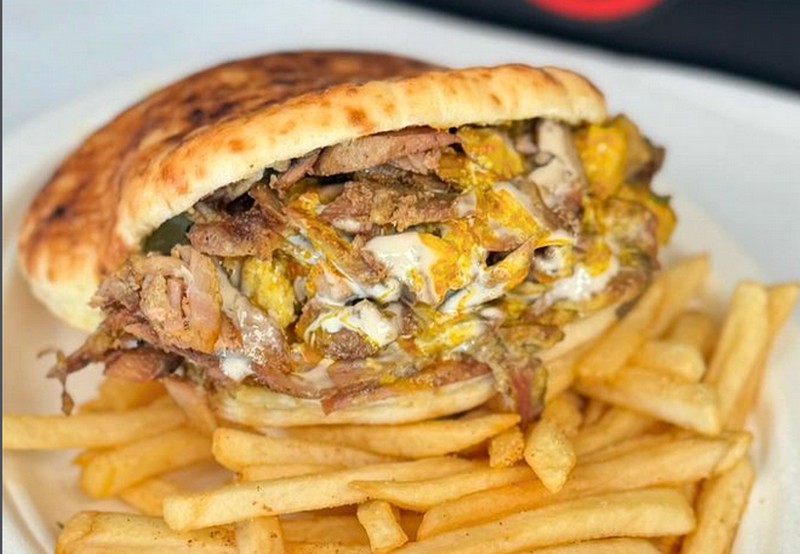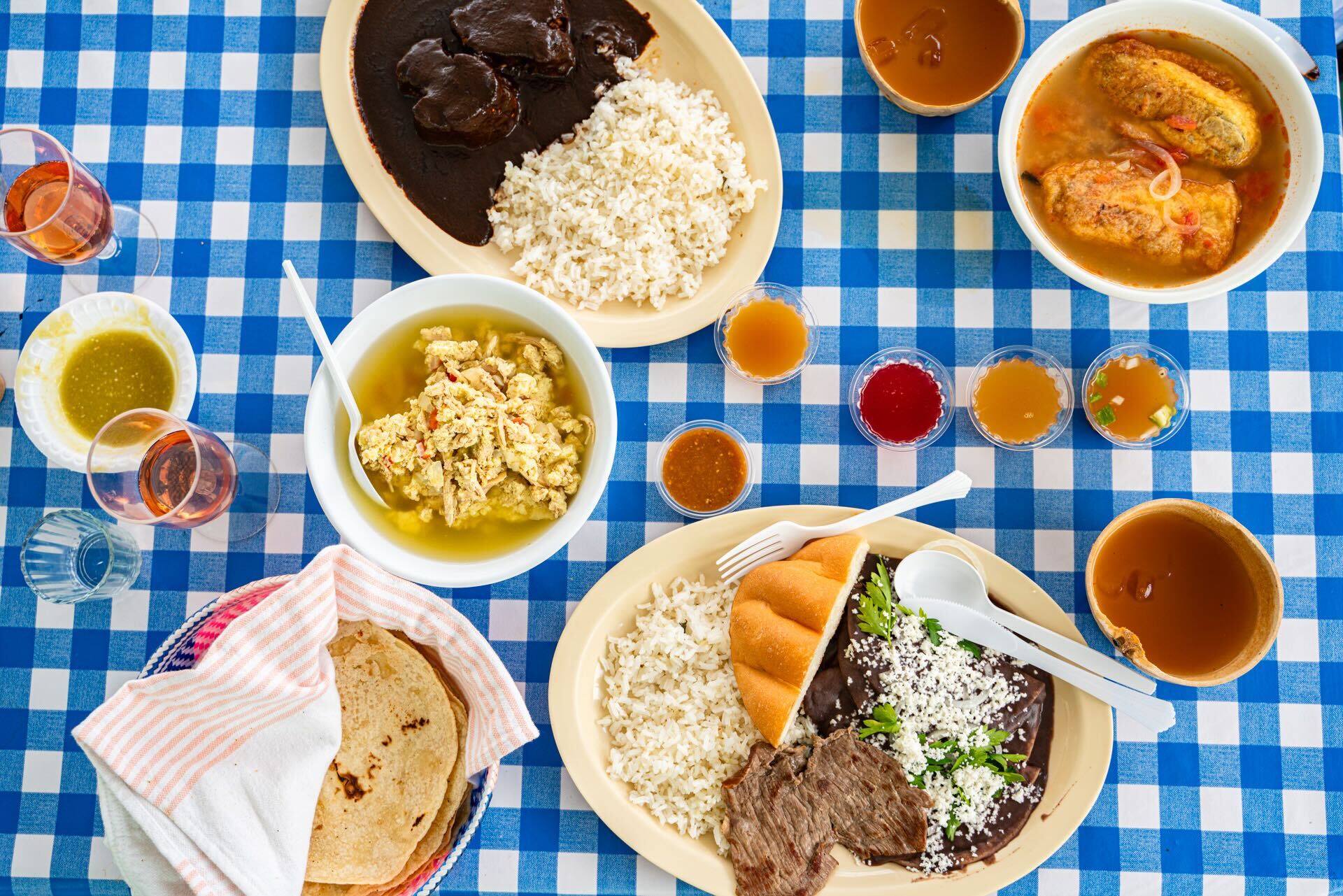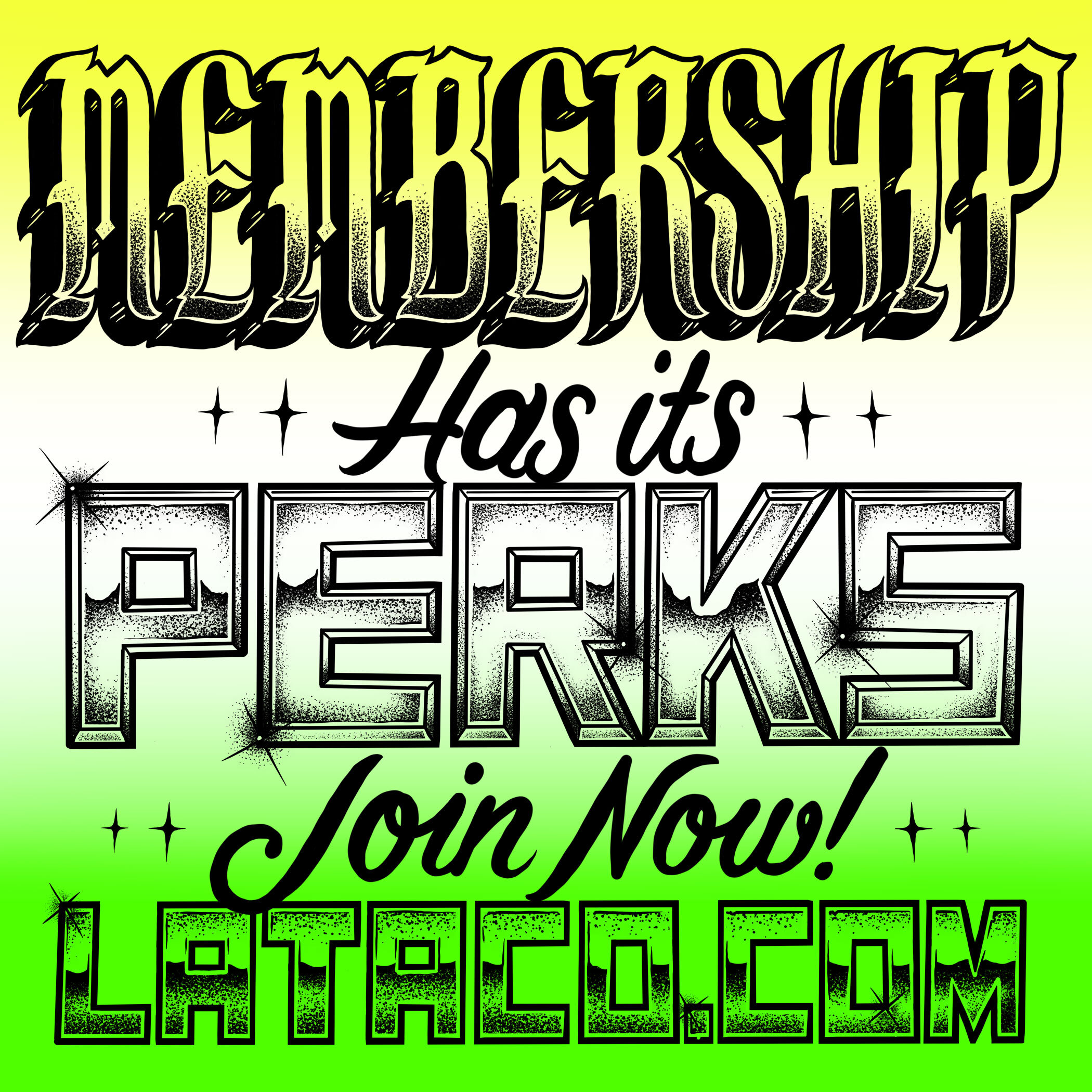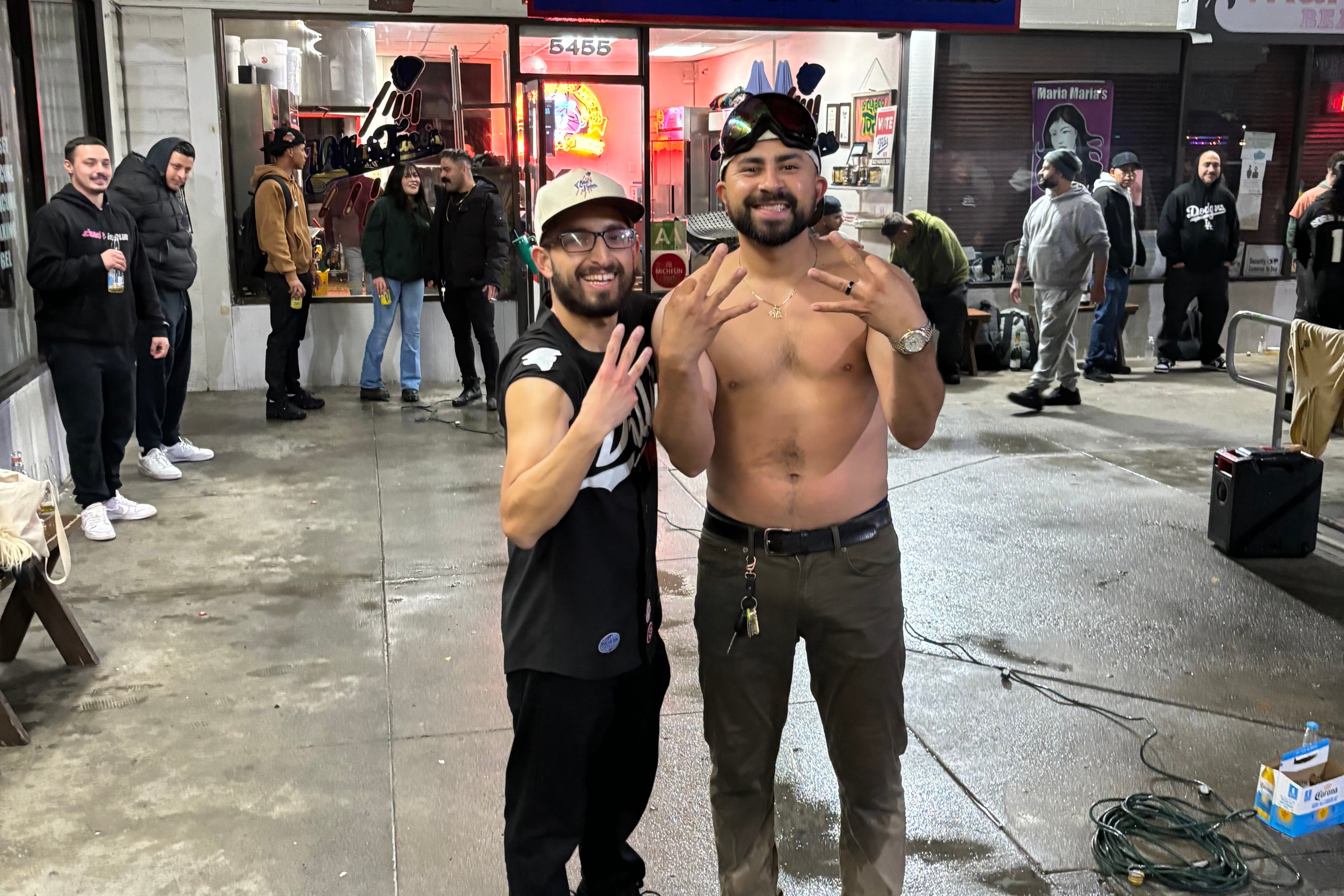We Had to Hang Out in Person ~ An Oral History of the Heyday in Nineties Hollywood
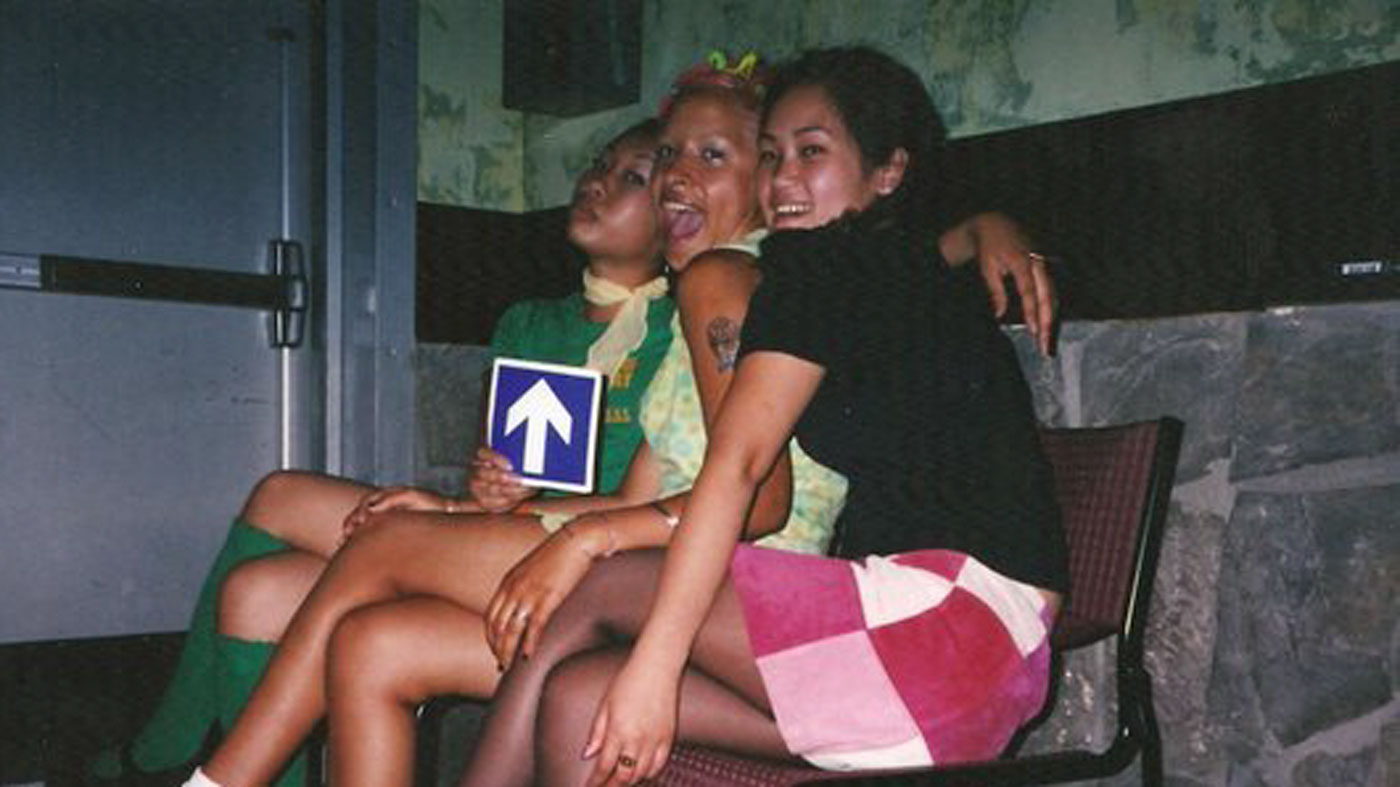
[dropcap size=big]O[/dropcap]n a Thursday night in 1995, I stumbled into a dance club for the first time. It was a goth and industrial party on Hollywood Boulevard that drew a line of people dressed in black by 10 p.m. Once inside, "Red Light,” a creepingly slow Siouxsie and the Banshees track drew me towards the dance floor, catching a glimpse of a Robert Smith look-alike along the way. I did a double-take. Apparently, that was too much goth for my brain to handle, because I tripped over who-knows-what, clutched my lunchbox-shaped handbag so that it wouldn't spill open and caught myself before hitting the floor. No one seemed to notice my near-humiliation. In the regular world, I was one of those strange looking kids with weird taste in music who attracted all sorts of unwelcome attention. Here, I could faux pas and still fade into the crowd on the dance floor. I had finally found the place where I belonged.
What started out as one night on the dance floor turned into my life. At Loyola Marymount University, where I had recently started college, we had an ever-expanding crew that trekked from dorms near LAX to Hollywood and nearby West Hollywood on a near-nightly basis. Within a couple months, I made friends outside that initial circle. In less than a year, I landed my first DJ gig and went on to spend the rest of the '90s and much of the early '00s deejaying in and around the neighborhood.
I never lived in Hollywood, but was there often enough to see changes happen. A mall popped up on the corner of Hollywood and Highland. The Academy Awards moved in from downtown. Tourists stuck around after dark. Back then, though, I didn't know what any of that meant.
The music, the parties, even the venues were always in flux. That kind of change was expected. What was perhaps less expected was that the old crowds would essentially become unwelcome and that, what happened in Hollywood would foreshadow a movement across the city, transforming one neighborhood after the next until they are nearly unrecognizable.
[dropcap size=big]W[/dropcap]hile walking down Hollywood Boulevard recently, I stared at a nondescript space on the bottom level of a corporate building, next to a chain restaurant. Back in 1995, it was a venue called the Diamond Club and that's where I began my fall into the club scene. By the early 2000s, it was known as The Ruby. I was a resident there on Saturday and Sunday nights.
I can still imagine the smell of Saturday night sweat that lingered when I arrived for soundcheck on Sundays. Now, I studied the building and sidewalk to make sure that it’s the right place. I noticed what looked like the old smoking patio in front and Walk of Fame stars lined up outside the entrance, where club kids waited to get their IDs checked.
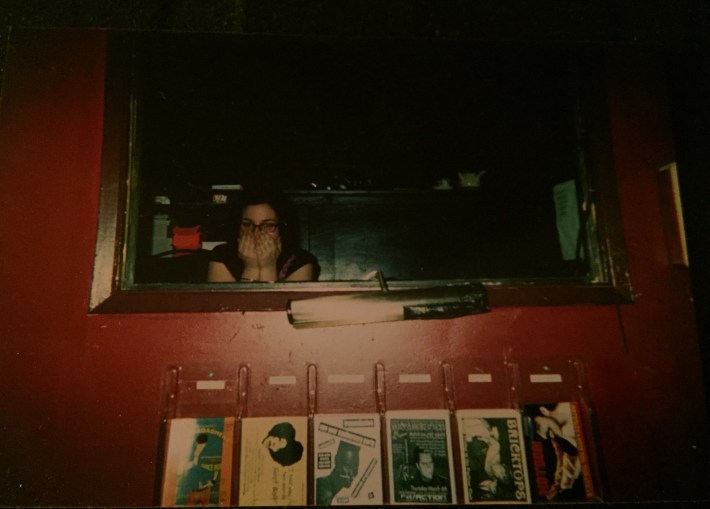
'The Hollywood We Knew'
[dropcap size=big]I[/dropcap] used to love Hollywood. Now, every time I visit, I'm struck by a mixture of sadness and rage. I'm still pissed that Hollywood's makeover took away everything that made it beautiful and interesting. But, am I the only one who feels that way?
I wanted to find out — Do people ache as much for the Hollywood of the 90s heyday as me? I put out an interview request on Facebook and the response was immediate and immense. People have a lot to say about the Hollywood we knew. So I called up a handful of friends, including a few that I've known since the mid-'90s and DJs with whom I still play, to talk.
'Hollywood is the microcosm for what happened in L.A. in general.'
Our Hollywood existed between the '90s and early '00s, a faded tourist trap where the sightsee-ers left somewhere around sundown. It was the place where everything that made you an outsider in your own neighborhood — from superficial choices to deeper issues of identity — was accepted. It was where you could gather the rest of your tribe.
"To find all the black sheep in one place is really cool," says James Bryan, an Orange County-based make-up artist, as well as one of the first friends I made while hanging out in Hollywood. "I'm sure that's what drew me to all the clubs."
James was 16 and living in La Puente when he dressed in drag to go to Sin-a-Matic, in West Hollywood. "I was told by my friends that were taking me that if I went in drag, they would let me in for free and without an ID," he says, "and they did!"
Clifton Weaver III, now a popular local DJ, was a student at UC Irvine and working at a bookstore when he and a co-worker decided to check out Cafe Bleu, where Britpop and '60s tunes were the soundtrack. "It was a whole new world," he says. "I had never heard a club or any place play music like that."
Maurice de la Falaise, also well-known today as an L.A. DJ, cut class in Tijuana to go shopping in Los Angeles with a friend. They came across flyers for Cafe Bleu and decided to check out the club early before heading home. "We had to leave because we had to go back to Tijuana," he says. Eventually, though, he started driving up with friends on Thursday nights for the party.
No matter where we lived or how we ended up at those clubs, the common thread was that they were addictive. "Within two weeks, I was bringing a candelabra to clubs. I was that kid," says Lenora Claire, who today works in television and promotes the day party Sad and Boujee.
"It's really deep and I met people that I'm still friends with today," she adds. "It was just completely, wonderfully overwhelming and I haven't really seen anything like it since."
RELATED: ‘What Are We Going To Do With Our Wednesdays Now?’ ~ A Long GoodBye For Low End Theory
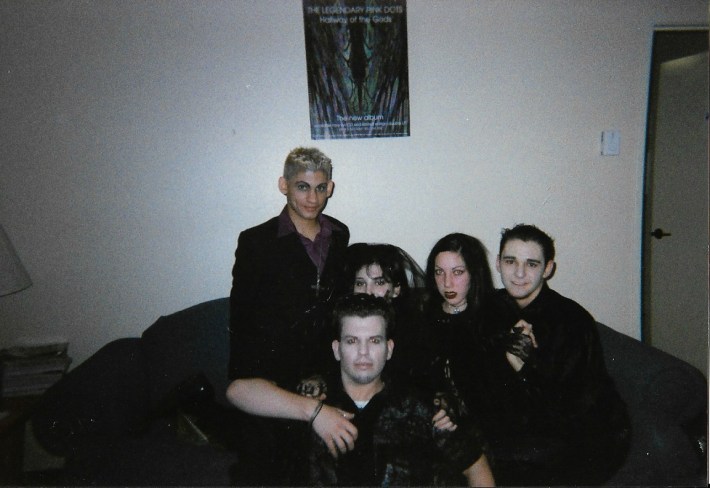
'Don't Ask, Don't Tell'
[dropcap size=big]W[/dropcap]e needed to find each other. It was more than just a craving for music and fashion that existed outside the mainstream. To be a part of those worlds in that time was to put yourself on the line. Visible tattoos, facial piercings and unnatural hair colors weren't acceptable in conventional society. Even clothing that identified you as part of a scene, be it goth or mod or punk, could put you at risk for bullying. And, while the gay rights movement started decades earlier, society was still pretty far from being totally accepting of LGBT people. It was the "Don't Ask, Don't Tell" era.
Hollywood became the place where people could be more open about their lives, where young people could explore their identities inside clubs. These spaces weren't exclusively gay, but they weren't ever exclusively straight either.
"I felt way more powerful at a goth club or a ghoulie alternative club than I ever did at a gay club," Bryan says. "At a gay club, I always felt like I don't belong, like I'm not worthy of the big, buff guys that are hanging out there. Gay clubs always scared me when I was young."
"Back then, even guys wore makeup, heels, lingerie," says Jorge Sandoval, a makeup artist who started going to goth clubs in the late '90s as a teenager living in Riverside. Sandoval, who came out in high school, experimented with different looks at the clubs, trying out androgynous styles and developing a drag persona. "That's where I was really able to express myself, explore my femininity, gender-bending," he says.
The alternative clubs were typically 18-and-up. Free street parking was ample. You could go out and dance for less than the price of a night at the movies. "If you show up early, you can get in for under $5 and you showed up after that, it was somewhere between $5 and $10," says Jason Schary, known to club-goers as DJ Bractune and half of the electronic music duo Whiteqube, who was introduced to the industrial club scene while attending USC.
"Anyone could afford to go, and I think that was great."
RELATED: ‘The Whole Gaslamp Thing’ ~ Saying Goodbye to Low End Theory With DJ Nobody
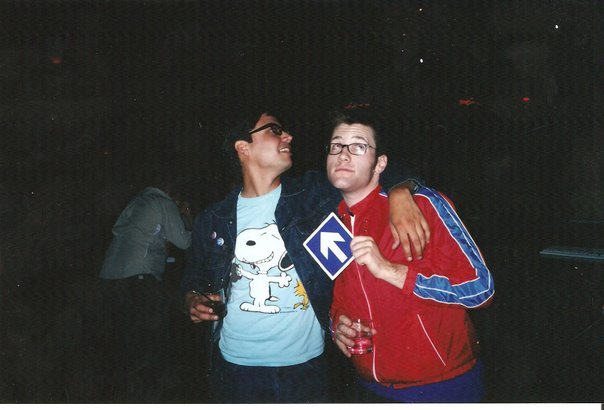
Hollywood & Highland
[dropcap size=big]I[/dropcap]n a pre-foodie L.A., our late night dining options were limited. A now long-gone Del Taco on the corner of Santa Monica and Highland was the inexpensive spot that became a scene unto itself, bringing together the goths, indie kids, househeads and anyone else looking for a cheap eat after last call.
After 2 a.m., we revealed our true selves as the overly bright lights hit our faces in the most unflattering ways. Smudgy black liner that looked awesome at 10 p.m. was now a mess. Urban Decay lipstick with a name far more interesting than burgundy faded to a bloody stain. We ate slowly, dropping bombshell confessions — from the names of our latest crushes to the pop songs we didn't actually hate — in between bites of fries and sips of soda.
In those days, when the Internet was still a novelty and calling friends outside your area code could result in a huge bill, we had to hang out in person.
One night shortly after Hollywood & Highland opened, I arrived at The Ruby early with a friend visiting from out of town. I pointed to the monstrosity on the corner of Highland. Even amongst the neighborhood's over-the-top movie theaters, it was an eyesore, just too new to have any sort of kitsch appeal. Plus, it was a fucking mall, only its facade was different from the ones in the neighborhoods that L.A. kids escaped for a night in Hollywood. It baffled me that anyone would travel to another city to shop at the same places that existed at home.
The new mall at Hollywood & Highland was a turning point for the neighborhood.
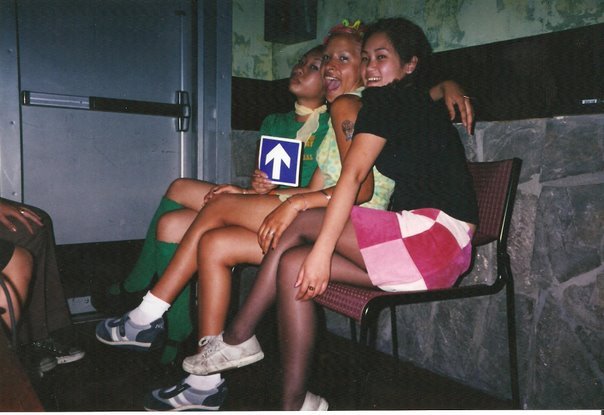
At around the same time, de la Falaise, who DJed Saturday nights inside the now-defunct Knitting Factory on Hollywood Boulevard, also noticed that something was different. "There was a time when more people started going to Hollywood and there would be more traffic," he says. Eventually, he says, he noticed "more aggressive" crowds in Hollywood.
The crowds grew in size and intensity. I was physically harassed more than once out on the dance floor and that was something that I hadn't previously experienced in a club in Hollywood.
There were other signs of change. Claire recalls Spider Club, the space above Avalon, now known as Bardot. "That was the first time I remember seeing bottle service," she says. Weaver points to clubs that came to the neighborhood with bouncers deciding who could enter.
"For the longest time, I couldn't get into the Beauty Bar or Star Shoes," he says, mentioning two once-hot venues that have since shuttered. "Then, by accident, I met a couple of the managers and they said, 'You're always welcome'."
RELATED: From Hollywood Stars to East L.A. Unrest ~ The Photography of George Rodriguez
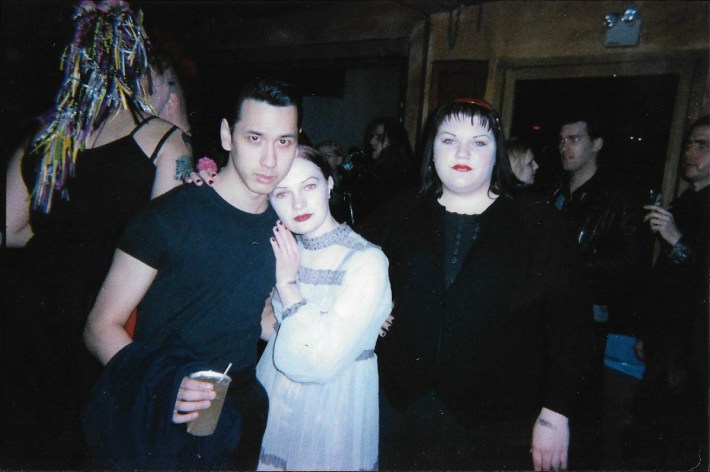
The New Century
[dropcap size=big]A[/dropcap]t the same time, there were cultural shifts that went beyond Hollywood. "I always think about this and I wonder if somewhere in the early 2000s, the idea of a subculture has died in a lot of ways," says Schary.
The internet and social media exploded. People could now find music online. They didn't have to rely on DJs or record stores to hear their new favorite songs. Plus, people no longer had to meet in person; you could find others with similar interests across the globe now. Maybe it was more than just gentrification that killed Hollywood's youth culture. Maybe it was this new century and everything that came with it.
'They traded in the cultural capital for this weird new-money kind of crowd.'
By the middle of the decade, a new crop of celebrity club crawlers (Lindsay Lohan and Paris Hilton amongst them) brought new attention to the more upscale clubs in the area. The niche music-based scenes that existed inside Hollywood clubs scattered further east. You can only say 'Fuck this place' so many times before you give up on a place all together.
"Hollywood is the microcosm for what happened in L.A. in general. It's happening in all the major cities," Weaver says. "Any city that has 'cultural capital,' they traded in the cultural capital for this weird new-money kind of crowd. They use their past cultural capital to advertise to these people, but at the same time, any kind of things that contributed to that culture, they're getting rid of, to make way for these people who may or may not actually exist."
In the end, you get present-day Hollywood, a place in the final stages of gentrification, remade not even for locals with money, but for tourists who have it.
Most of the character that existed there was priced out of the neighborhood years ago. The celebrity cool-kids who made it more desirable to the masses in the mid-00s are no longer relevant. Now, what dominates is corporate culture, with the occasional nod to a past that is growing more distant. If that could happen in Hollywood — which was, for so long, a subculture stronghold — it really could happen anywhere.
Now, I wonder if every L.A. neighborhood that is in the midst of its own "revitalization" will end up with the same fate.
RELATED: This Side of Hoover Is Archiving Gentrification in East Hollywood One Portrait at a Time
Read More:
Stay in touch
Sign up for our free newsletter
More from L.A. TACO
What To Eat In L.A. This Weekend: Mexican-Style Pastrami, ‘Trashburgers,’ and Flamin’ Jim Morrisons
Plus, a new shawarma spot in Tarzana and the country's first wine festival dedicated solely to orange "skin contact" wine happening in Hollywood.
The 11 Best Backyard Restaurants in Los Angeles
Despite many requests to publish this guide, L.A. TACO has been somewhat protective of these gems to not "burn out the spots." However, we wanted to share it with our small, loyal pool of paid members, as we appreciate your support (and know you to be okay, non-NARCs). Please enjoy responsibly and keep these 'hood secrets...secrets.
Here’s What an L.A. TACO Membership Gets You and Why You Should Support Local Journalism
With more than 30 members-only perks at the best L.A. restaurants, breweries, and dispensaries waiting to be unlocked, the L.A. TACO membership pays for itself!
Announcing the TACO MADNESS 2024 Winner: Our First Ever Three-Time-Champion From Highland Park
Stay tuned for the new date of our TACO MADNESS festival, which was unfortunately postponed this last Saturday due to rain.
What To Eat This Weekend: Cannabis-Infused Boat Noodles, Thai Smashburgers, and “Grass & Ass”
Plus, a pizza festival and a respected chef from Toluca, Mexico comes to Pasadena to consult for a restaurant menu, including enchiladas divorciadas, and more.
